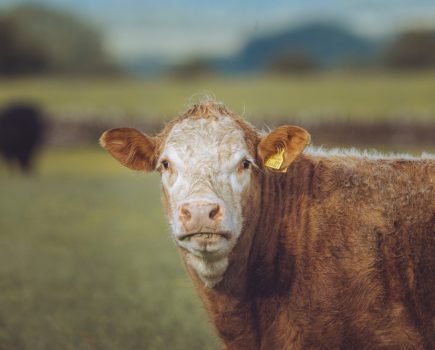Special report on the Defra approach to Bluetongue. Leading smallholder and CS columnist Alan Beat, who has made a study of the diseases, gives his views on DEFRA’s approach.
Bluetongue affects all ruminants, including sheep, cattle, deer, goats and camelids (camels, llamas, alpacas, guanaco and vicuña). It does not affect horses. Although sheep are most severely affected, cattle are the main mammalian reservoir of the virus and are very important in the epidemiology of the disease. It is characterised by changes to the mucous linings of the mouth and nose and the coronary band of the foot. The disease is caused by a virus spread by certain types of biting midges. The presence of the disease is confirmed by laboratory tests. Bluetongue does not affect humans.
History and spread of the diseaseBluetongue was first described in South Africa but has since been recognised in most countries in the tropics and sub-tropics. Since 1999 there have been widespread outbreaks in Europe. It appears that the virus has spread from both Turkey and North Africa. Bluetongue has never previously been recorded in Great Britain. Animal keepers should remain vigilant for the clinical signs of the disease in sheep and cattle, and as ever practice good biosecurity. Bluetongue is a notifiable disease and must be reported to your Division Veterinary Manager.
CauseBluetongue is caused by a virus. At present 24 distinct serotypes have been identified. The virus is transmitted by a small number of species of biting midges. Bluetongue virus cannot naturally be transmitted directly between animals. Virus transmission occurs via these midges. Mechanical transmission between herds/flocks and within a herd/flock by unhygienic practices (eg use of contaminated surgical equipment or hypodermic needles) cannot be excluded. Bluetongue is most commonly seen in the late summer and autumn.
Confirmation of BluetongueBluetongue is unusual in that the disease is only confirmed when there is evidence that the virus is circulating between animals and vectors in an area.CONTROL MEASURESPrecautions takenAll imports of susceptible animals from restricted areas in EU Member States affected by Bluetongue are currently banned. All susceptible animals from continental BTV-free EU Member States or zones (not including Ireland) are post-import tested for Bluetongue (imports back to May 2006 were tested, and have all tested negative). Daily meteorological surveillance is undertaken to assess the risk of wind-borne spread from BTV8 affected countries to the UK. Defra is encouraging vigilance and early reporting of disease by farmers and vets (Bluetongue is a notifiable disease and suspicion of disease must be reported). Defra is raising awareness of the disease through a publicity campaign. What is the maximum and average distance a midge infected with bluetongue disease can travel?From initial studies it is estimated that a midge can travel up to 1.5 – 2 km a day. Depending on the weather, midges can be carried more than 200 km over water masses. There is a Bluetongue Control Zone and a Bluetongue Protection Zone in England. VaccinationCurrently, no vaccines are suitable against the outbreak of BTV8 in Northern Europe.ALAN BEAT’S VIEWBluetongue has the potential to be far more damaging to smallholding than either FMD or Avian flu. It is often fatal, killing up to 50% of sheep infected, sometimes 70%, and during the current epidemic in Europe has killed some cattle as well. It is also more likely to become endemic, posing long-term animal welfare issues.Slaughter and movement bans have both proved ineffective in controlling the disease, so vaccination is seen as the only realistic solution. However the vaccine is strain-specific, and none exists against the BTV-8 strain now affecting the UK. So, in a breathtaking display of hypocrisy, the NFU is clamouring for an effective Bluetongue vaccine to be urgently developed and deployed, having flatly refused for many years to contemplate any use of existing and highly effective vaccines against FMD! Meanwhile, Defra has halted all development work on Bluetongue vaccine following the escape of FMD virus from the Pirbright site.The Royal Society had warned in 2002 that Bluetongue was likely to spread northwards with climate change from its established range in southern Europe. However, the strain that struck Holland, Belgium, Germany and France during 2006 is absent from Southern Europe and is only found in Africa, South East Asia and South America. The present epidemic cannot be due to northward drift, so the international movement of infected live animals must be responsible. Until this nettle is grasped, the importation of further and more dangerous animal diseases to the UK is inevitable. For further information or advice about bluetongue from Defra call their Helpline on 08459 33 55 77PICTURE: First clinical signs of Bluetongue: rise in temperature, followed by hyperaemia of oral cavity and mucus membranes leading to oedema of the lips, tongue and face. Source: Institute for Animal Health







